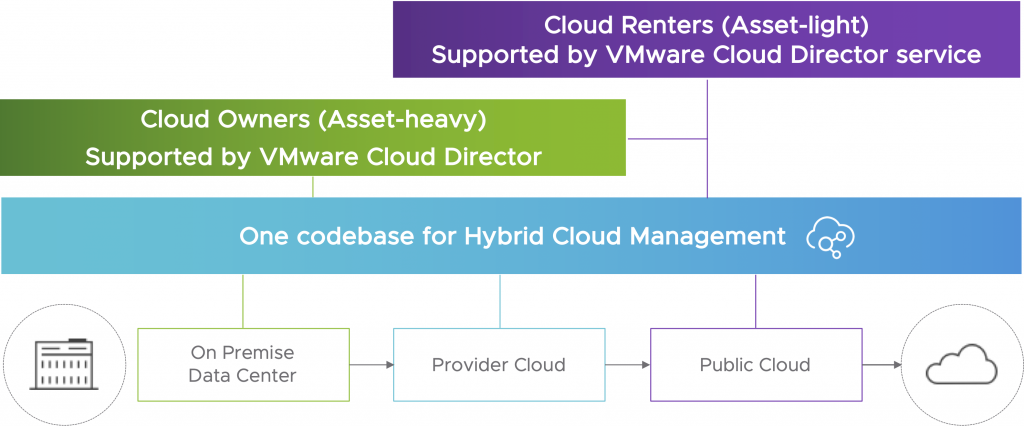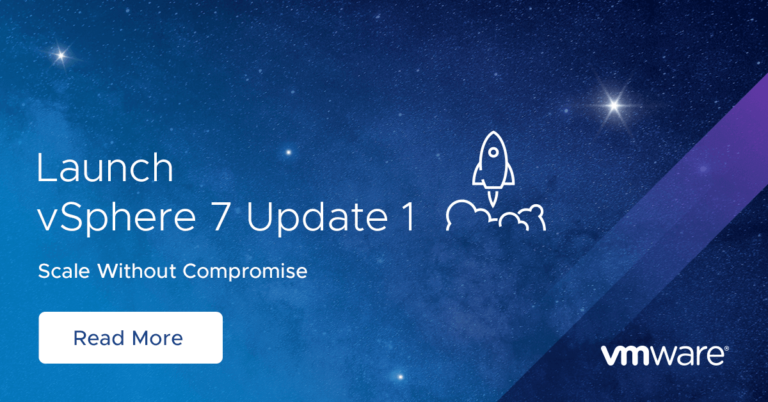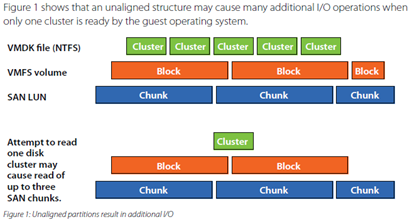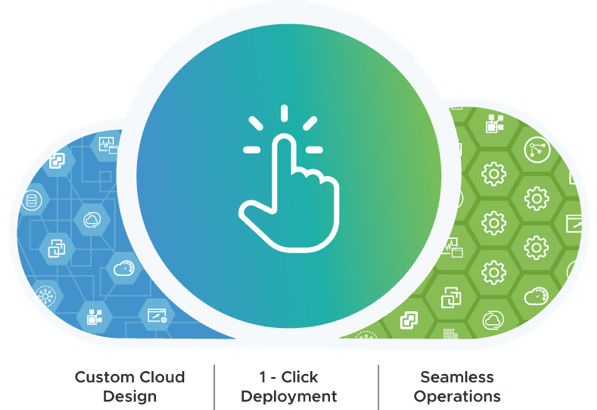We are excited to announce our second major release of VMware Cloud Director for 2020 coming soon. Within an ever-changing and recently more challenging economic environment, we remain focused on listening to your feedback and addressing provider and customer needs.
First, VMware Cloud Director 10.2 will introduce a number of updates, with the highlights focused on helping partners expand their business with key network and security services (i.e., key VMware NSX-T capabilities fully integrated), crucial to support customers’ need for network simplicity and secure cloud requirements. Second, increased Object Storage offerings and performance controls will help providers tier storage services helping manage cost and performance. Lastly, enhanced support for modern application services expands reach to developers and DevOps engineers with a full Kubernetes development infrastructure and easily customized and consumable application marketplace will allow partners to better address their customers’ development goals.

VMware Cloud Director ‘Anywhere’
VMware Cloud Director provides extensive automation for service delivery of infrastructure, network, security services and container, object storage and marketplace applications. This mature, but rapidly growing, product is now 10 years old and has seen substantial evolution following the changing cloud environment.
Common Codebase from Provider Cloud to VMware Cloud on AWS
Now more than ever, hybrid cloud is a key requirement for customers. That’s why we are thrilled to share that VMware Cloud Director on-premises and VMware Cloud Director service in VMware Cloud on AWS will be on the same codebase;

As the diagram above depicts, VMware Cloud Director can now manage across all clouds, and tenants can access any instance and manage through to an associated instance to manage another cloud infrastructure. Assuming same features of the underlying SDDC, VMware Cloud Director and VMware Cloud Director service provide the same capabilities, allowing you to connect customers to their datacenter services and applications using a hybrid operational model.
VMware Cloud Director service Global Availability
Whilst the 10.2 codebase will become generally available in Q4 CY2020, we are also excited to announce the VMware Cloud Director service will also be globally available in Q4 CY2020 with new regions in EMEA and APJ coming on line for partners to address ‘asset lite’ VMware Cloud on AWS virtual data center services. Not only does this present high value services by itself, but when combined with associated VMware Cloud Director on-premise instances even more value can be obtained for both customer and partner.
With VMware Cloud Director service available in these regions, providers will be able to manage infrastructure within other VMware Cloud on AWS data centers using VMware Cloud Director service – as long as latency requirements (<150ms) are met between instances. This means very simple and agile expansion and a common hybrid operating model will be achievable for customers who cross multiple geographies.
Investing in the growing set of digital capabilities delivered by VMware Cloud Director (whether VMware Cloud Director in your data center or VMware Cloud Director service in VMware Cloud on AWS) allows partners to help customers respond effectively to changes in the economic environment and accelerate recovery on the upside. Partners need to invest in technology to flatten the current market impacts, retain customers and help upsell or cross-sell for increased share of wallet.
Enhanced NSX-T Integration for New Network & Security Services
With NSX-T now mainstream in customers, a big focus in Cloud Director 10.2 is to deliver greater support and integration between NSX-T and VMware Cloud Director. With parity much better in 10.2, providers can migrate to NSX-T and deliver networking and security services that will include:
- Support for L4-7 distributed firewalling (L7 limited to static membership) and enhanced networking features such as VRF lite
- UI enhancements to provide cross VDC networking stretching networks across multiple VDCs, which allows common distributed firewall policies over hybrid environments
- Tenant networks from on-premises to the cloud provider will be able to be connected by layer 2 VPN, no matter if the on-premises NSX version is NSX-V or NSX-T
In addition to these key networking updates, did you know that NSX Advanced Load Balancer (Avi Networks Load Balancer) will be available replacing for NSX-T native Load Balancer in NSX-DC Base Edition? Read how this is integrated in VMware Cloud Director here. Now, Cloud Providers using the Flex Core can use NSX Advanced Load Balancer and easily uplift to advanced features such as WAF, DNS, SSL Termination, rate-limiting, and more with the NSX ALB Enterprise edition.
Major Updates to Enhance Developer-Ready Cloud and Kubernetes Support
Aligned to customers driving their digital initiatives forward, you should be thinking about offering developer and application focused solutions to your customers. Key updates in 10.2 deliver out-of-the-box innovations for container services and application-aaS offerings to expand your reach into the developer community, ready for customers’ digital transformation initiatives. We are excited to announce two key updates in this area:
New Containers as a Service with Tanzu
First, for customers who need a development infrastructure, VMware Cloud Director has made Kubernetes a first-class entity and provides native integrated support for VMware vSphere with VMware Tanzu. For providers, this means they can now enable orchestration of K8s cluster resources natively on vSphere with VMware Cloud Director acting as a unified platform for hosting them all.
Partners can create Provider Virtual Data Centers using native vSphere with K8 and layer solutions on top, e.g. Developer readiness solutions. Customers can deploy vSphere with Tanzu K8s natively using VMware Cloud Director or Native K8s or Enterprise PKS with Container Service Extension 3.0 and can perform Life Cycle Management of all types of clusters via VMware Cloud Director Cluster API, CLI, and Container Service Extension-CLI, and UI-Plugin.
(Note that Native K8s services are not available in cloud-based VMware Cloud Director service until VMware Cloud on AWS supports them.)
Enhanced Application as a Service Capabilities
Second, for customers who wish to deploy and run applications and not worry about the infrastructure underneath, the new VMware Cloud Director App Launchpad 2.0 version will enable Service Providers to offer a marketplace of applications within VMware Cloud Director to any endpoint: both VM- and container-based. Ideal when the customer wants to create instances of applications without managing the underlying infrastructure.
App Launchpad is a plug-in for VMware Cloud Director (see blog on version 1.0) that enables a user interface to easily access and launch applications from VMware Cloud Director content catalogues. Using App Launchpad, developers and DevOps engineers will be able to launch Marketplace and custom applications to VMware Cloud Director managed infrastructure in seconds. App Launchpad 2.0 brings enhanced end point support from Container Service Extension 3.0, Kubernetes on vSphere for App Launchpad so that tenant users, can launch apps into the relevant infrastructure (Org VDC or K8s cluster) automatically.
Users will be able to select custom or vendor images or helm charts (from private registries) to deploy and select K8s clusters including existing clusters to deploy into, hit launch and access running app via public IP address. Custom in-house apps, either VMs or containers are supported in this manner. App Launchpad 2.0 introduces deep integration with the VMware Cloud Marketplace. From App Launchpad, Providers can subscribe to VMware Cloud Marketplace VM and container solutions, and leverage Marketplace’s Auto-Sync feature to automate the lifecycle management of App Launchpad catalogs, minimizing operational overhead.
Simplified Deployment for Cloud Director
Building on 10.1 enhancements capabilities, 10.2 aims to make deployment easier and more robust with a new deployment UI and inclusive error-checking. Appliance improvements with backup, automation to create new standby nodes after a backup/restore and validation of user input during OVA deployment help eliminate user errors and protect your investment.
Increased storage flexibility and efficiency
VMware Cloud Director 10.2 integrates with vSphere Storage Policy-based IOPS configuration, which will allow the configuration and management of vSphere Storage I/O Control for Storage I/O resources on a per VM basis from the VMware Cloud Director provider admin UI (previously an API only feature).
VMware Cloud Director will also provides shared disks to enable Microsoft and Oracle clustering use cases and container persistent volumes. With enhanced storage controls available to provider admins in the UI, a lot of storage complexity has been removed, making services more scalable and appropriate to managing all aspects of multi-tenancy.
Object Storage improvements in Object Storage Extension (OSE) 2.0 will provide tenant users the ability to use OSE UI to manage their AWS S3 service. With this new native AWS S3 integration, a VMware Cloud Director provider will be able associate a tenant’s AWS account to the tenant Org unit giving them access to use their S3 buckets and run CRUD operations. Also, OSE 2.0 will provide support for Cloudian 7.2 and Dell ECS 3.4 compatibility, and a new interoperability model will allow storage vendors to implement an adapter for their own solutions to work with OSE.
Further efficiency gains will be provided in improved usability for provider and tenants: VMware Cloud Director 10.2 continues to improve the usability with new features in provider and tenant portal. Guided Tours is a great new feature that will help new users to find their way through the UI, and providers to highlight offered services and features. With new ‘Advisories’, providers will be able to notify tenants, for instance about planned maintenance. And a new Quick Search will simplify the navigation through a large number of objects.
Increased customer visibility into their clouds
With every growing customer demand for public cloud services, increased visibility into the capacity and performance of their virtual data center resources is required. The vRealize Operations Tenant App 2.5 will cover a number of areas of improvements; including support for the Container Service Extension Kubernetes Clusters that will allow tenant administrators to better understand their Kubernetes cluster usage. The ability to provide custom reports to the tenant dashboard means providers will be able to tune the reports to the tenants needs, providing more specialization and value-added services for partners to offer. Equally customizable email notifications mean tenants will be informed when conditions are met regarding their infrastructure services, great for self-service public cloud offerings where the provider wants minimal management of the service.
Learn More about Latest Innovations
There are many more innovations in VMware Cloud Director 10.2, too many to include in this blog, so why not check it our yourself at VMworld with session “What’s New in VMware Cloud Director [HCPS2407]“.
Also check out our new partner free VMware Cloud Director business enablement training covering a number of key topics; VMware Cloud Director service strategy, GTM model, packaging and pricing strategies and monetization examples
Lastly if you are wondering about how some of these new functions will work, then follow our Feature Fridays series where we step though week by week aspects of VMware Cloud Director and will be covering many of these new capabilities as they are released.






